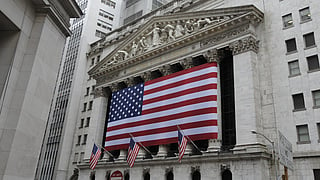India's benchmark indices have beaten U.S. and Chinese markets in the past one month even as they lag on a year-to-date basis.
The NSE Nifty 50 gained 1.85%, and the S&P BSE Sensex rose 1.79% from a month ago as of Sept. 25. That compares with China's SSE Composite's 1.69% rise, while all three major U.S. stock indices fell, led by the Nasdaq Composite's 2.79% decline.
The performance contrasts with how the markets have fared this year. So far in 2023, Nifty has gained 8.12%, underperforming benchmark indices in the U.S., Korea, Japan, and Brazil. The U.S. Nasdaq Composite leads with 27.20% gains.
India Versus Emerging Markets
Among the emerging markets, India ranked third behind Turkey and Japan in terms of one-month market performance.
The stock index in Turkey's rose by 4.18% and in Japan's by 3.33%. While those of Brazil rose 0.15% and Korea declined 0.44% in the one-month period.
Valuations
India continues to be the fourth-most expensive market when compared to global and emerging markets, next to the US's Nasdaq Composite, Japan's Nikkie 225, and Argentina's ARG Merval.
The one-year forward price-to-earnings ratio of the Nasdaq Composite, the most expensive index in the United States and across countries, is 34.75. India's ratio stood at 19.91, marginally higher than the valuations of the S&P 500 and Dow Jones Industrial Average but lower than those of Japan and Argentina.
 RECOMMENDED FOR YOU
RECOMMENDED FOR YOU

US Stock Market Today: S&P 500, Dow Jones Decline Amid Jump In Yields
 Sep 25, 2025
Sep 25, 2025

US Stock Markets Today: S&P 500, Dow Jones Hits New Record High
 Sep 23, 2025
Sep 23, 2025

IBM And BharatGen Collaborate On Accelerating AI Powered By Indic LLMs
 Sep 19, 2025
Sep 19, 2025

Dollar Rises Most In A Month As Traders Snap Up Safe Havens
 Sep 02, 2025
Sep 02, 2025


